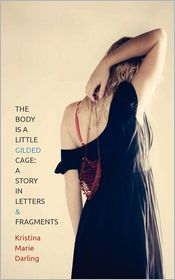
|
I was initially drawn to H.D.'s poems and correspondence afterreading her biography. She led a fascinating life, traveling Europe, undergoing psychoanalysis with Sigmund Freud, and even producing silent films. As I read and researched, though, I was surprised by the ways my relationship to these sources changed. At first, I saw myself as simply narrating scenes from her life. I was afraid to take liberties with the material, since I felt as though it wasn't my own. After a couple of months, my relationship to H.D.'s letters and poems changed completely. As I mined text and images from the original sources, they became a vehicle for me to say things about my own experience that I would have never been able to say otherwise. In a way, I suppose that my autobiographical impulses took over the project. The best advice I can give is this: don't be afraid to edit, rewrite, and fictionalize these sources. Many contemporary poets find inspiration in historical subject matter, but they're hesitant to change the materials they find for their own purposes. They feel like they won't do justice to their chosen subject by rewriting history. I've definitely been guilty of these things myself. But this kind of mindset makes it extremely difficult for the writer to showcase their own voice, style, and vision in a research-based project. Writing poems in footnotes is a completely different experience from writing in free verse, or even working with other prose forms. I find that with the lyric, the ode, and even the prose poem, I spend a great deal of time building connections between images, ideas, and motifs. With footnote poems, the reader is invited to forge these connections, so it's a very liberating experience for the writer. One has the freedom to include fragmentary images and texts without a clearly defined idea of how they relate to other parts of the poem. Instead, numerous possibilities for interpretation can coexist within the same narrative space. With that said, I do enjoy working with more traditional literary forms as well. I feel like I learn a great deal about myself by forging these connections between ideas, rather than leaving this work for the reader. Sequencing the poems was definitely a challenge. For this particular project, I found it helpful to group formally similar poems. I think that this strategy was useful because I was working with so many unusual literary forms, which ranged from prose vignettes, notes, erasures, footnotes, and glossaries to fragmented letters. I hoped that by presenting the work in formally distinct sections, I could avoid ending up with a manuscript that seemed chaotic or unruly. I also looked at the types of images that appeared in the poems. I like to think of a poetry collection as a place where images appear and reappear, acquiring multiple (and often contradictory) possibilities for interpretation. For me, sequencing the poems in a book-length project is a crucial part of opening up these possibilities for the reader. When thinking of poetry books I've enjoyed recently, Laynie Brown's Pollen Memory and Srikanth Reddy's Voyager are at the top of my list. Kyle McCord and Jeannie Hoag also have a wonderful collaborative book, Informal Invitation to a Traveler, that was just released by Gold Wake Press. And Jena Osman's The Network is a must-read. But as someone who's studied analytic philosophy for two years, I'd have to say that writers in this discipline have been a huge influence on my writing. Their interest in discovering and articulating formal systems is definitely a recurring theme in my recent poetry. Lately, I've been drawn to G.E.M. Anscombe's Intention especially. I love writing prompts, so I'd be delighted. Here is one of my favorites: Choose any scholarly discipline and give an account of its history. The account be of any length you wish, and it can take any form you see fit. I've been hard at work on a collection of prose writings called Melancholia (An Essay). The manuscript draws its inspiration from depictions of melancholy in Romantic literature. Excerpts are forthcoming in Rhino, Indefinite Space, Blossombones, Prick of the Spindle, and Rufous City Review. I hope you'll stop by my website for updates! Kristina Marie Darling is the author of three full-length poetry collections: Night Songs (Gold Wake Press, 2010), Compendium (Cow Heavy Books, 2011), and The Body is a Little Gilded Cage: A Story in Letters & Fragments (Gold Wake Press, 2011). She has been awarded fellowships from Yaddo, the Virginia Center for the Creative Arts, and the Ragdale Foundation, as well as grants from the Vermont Studio Center and the Elizabeth George Foundation. Her poems appear in Third Coast, Barn Owl Review, RHINO, Cider Press Review, Gargoyle, and many other journals. Visit Kristina's website here. ---- Mary Biddinger is Co-Editor-in-Chief and Managing Editor of Barn Owl Review. She is the author of three collections of poetry: Prairie Fever (Steel Toe Books, 2007), Saint Monica (Black Lawrence Press, 2011), and O Holy Insurgency (Black Lawrence Press, forthcoming September 2012), and co-editor of one volume of criticism: The Monkey and the Wrench: Essays into Contemporary Poetics (U Akron Press, 2011). Her poems have recently appeared or are forthcoming in numerous magazines, including Barrelhouse, Bat City Review, Blackbird, Devil’s Lake, diode, Forklift, Ohio, iO, Minnesota Review, Puerto del Sol, Redivider, Toad, Waccamaw, and South Dakota Review. She teaches literature and creative writing at The University of Akron, where she directs the NEOMFA program. She also edits the Akron Series in Poetry, and the Akron Series in Contemporary Poetics.
|
